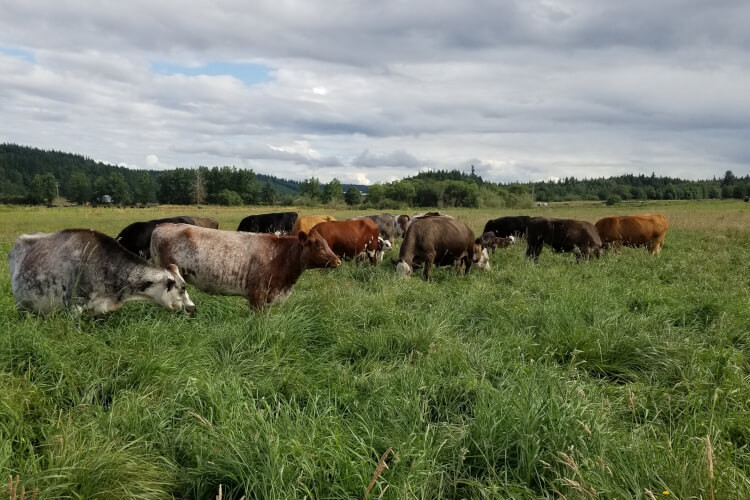Did you know our livestock have their own nutritionist?
posted on
September 6, 2023

You care about the food you eat, or you wouldn’t be here reading this…
So I thought you’d enjoy hearing about an interesting farm visit we had this week – from two of our livestock nutritionists!
These people are minor celebrities in our house.
Perhaps not on the scale of Luke Skywalker or Princess Leia (the Farmhands continue to be really into Star Wars).
But their importance is considerably higher because our ability to achieve optimal health is directly affected by what we eat.
And by what our food eats.
The way our food is produced is vitally important to its nutritional quality.
That’s why our animals are out on grass, reveling in the wonderful variety of nature available to them on growing pastures.
It’s why we freshly mill the grains we feed our pigs and chickens, since grain begins to oxidize and lose nutrition immediately upon being ground.
It’s why we provide kelp and minerals to all our livestock, including our 100% grass fed, zero-grain cattle.
And it’s why we work with nutritionists to formulate complete, balanced rations for each of our animals, at each point in their lifecycle, and for each season.
These lovely people are not just theoretical scientists working from industry standard spreadsheets, either.
They have hands-on, practical knowledge of all aspects of animal welfare from their own life experiences.
Plus the valuable added insight gleaned from working with many farmers like us, in diverse climates and situations across the US.
In fact, one of the nutritionists who visited us, Jeff Mattocks, wrote the book on Pastured Poultry Feeding and Management - quite literally.

This is not a reading recommendation - this book is likely only entertaining to geeky farmers :) - but it’s probably the most-thumbed volume in the rather extensive One Straw reference library.
Because we know that the author not only knows what he’s talking about, but also has the best interest of the animals at heart – and by extension the best interests of the land, the customer (you!) and the farmer (us!).
And that’s why we were so excited and honored by this visit.
You see, these fine folks drove all the way out here from Pennsylvania, on a circuit through the States, to personally visit a few of the farms they work with.
That’s how committed they are to providing us the best possible advice.
Even though we did receive a little friendly chiding for forgetting to warn them about the joys of traveling to the Olympic Peninsula - the ferry (which they missed) and the Hood Canal Bridge (opening in progress). Oops ;)
But now when we call them up with a nutrition or management question, their answer will be further customized by the more intimate knowledge of our operation, having seen it in action. So cool!
And all this is important because food is medicine.
We order pallets of mineral mixes and kelp, instead of pharmaceuticals.
So when I find Farmhand Baby Grace in the feed barn, covered head to foot with white powder, I may breathe a long sigh of exasperation.
But I know there’s no cause for panic. No harm done.
It’s calcium for the laying hens, not chemicals.
Optional nutrition for our animals means optimal nutrition for you – and the foundation for vibrant health.
And as if health is not reason-enough to care about what our animals eat, the high quality of their food is directly reflected in the excellent flavor of the meat and eggs.
Click here to order delicious, high quality meat and eggs.
Isn’t it beautiful that optimal nutrition is delicious?
Yours in the joy of honestly good food,
Charlotte Frederickson





